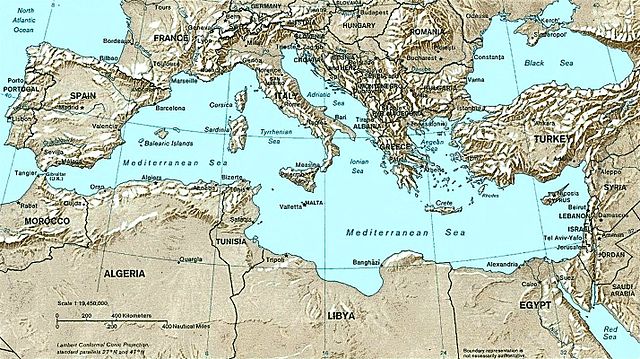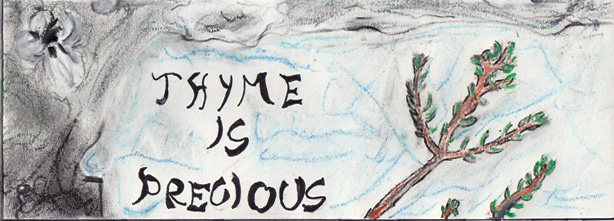Habitat
Thymus vulgaris originates from the Mediterranean. It is well
adapted for growing in dry hot weather. It prefers light,
permeable soil somewhat rich in organic matter & mineral
fertilizing elements. The sandy soil found inland around the
Mediterranean Sea is basic, low pH, and preferred by thyme. Areas
where Thymus vulgaris naturally occurs are northern Italy,
southern France and eastern Spain. However, it can also be found
in similar climates around the world and is found in many
gardens. The plant is hardy and has
many adaptations to help it survive. Thyme’s life cycle varies
in the Mediterranean and mountainous areas. For example, non-phenolic
thyme flowers in autumn unlike the phenolic thyme which flowers
earlier in summer.
This relief map shows the where the different altitudes around
the Mediterranean Sea. Phenolic thyme is more frequent at lower
altitudes.

Mediterranean climate is preferred by phenolic thyme. Conditions
are warmer and drier. However, these conditions are also
preferred by bugs. Therefore, plants in these areas have phenol
and yield more essential oil. Essential oils are important to
survival in this area. Thymol is the essential oil found in
Thymus vulgaris.
Plants must endure harsher conditions in the mountainous areas.
The plants that live at higher altitudes tend to be non-phenolic,
and there are no phenolic plants above 400m. On the bright side,
there are fewer pests at this altitude. A trade off occurs
rather than putting up with bugs; plants must live in less ideal
conditions. These areas are colder and wetter, snow melting and
more rain. Another difficulty mountain thyme must face is
increased wind.
Adaptations
